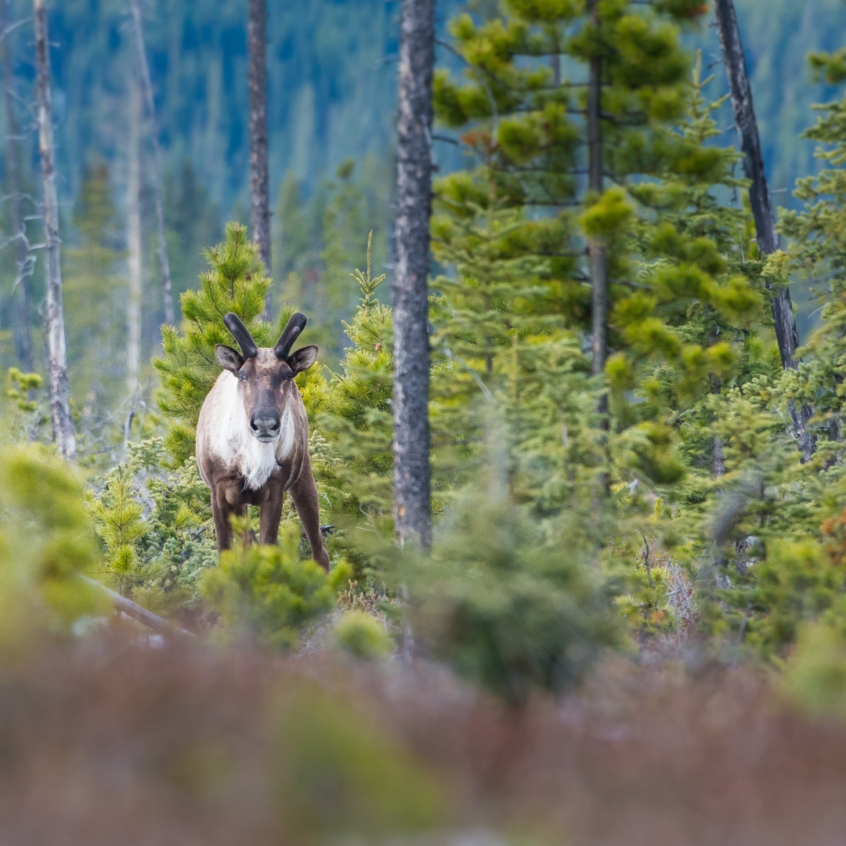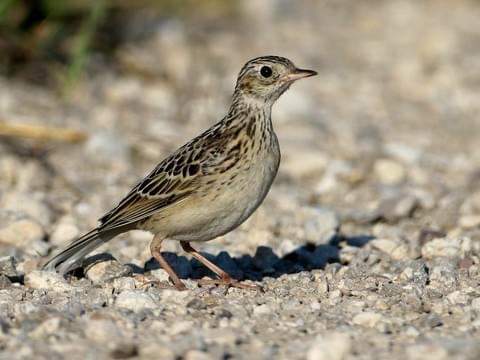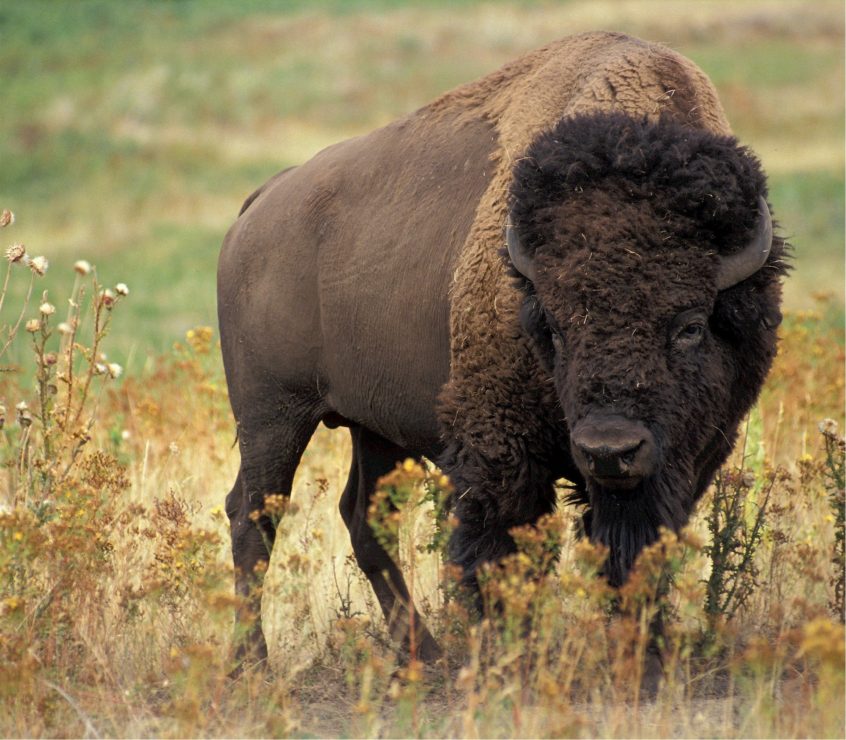Woodland caribou are a large mammal species that often get mistaken for moose on the Canadian quarter. They are an iconic species that roams the boreal forest as an indicator and umbrella species and they play a critical role to some Indigenous communities.
Eastern Yellow-bellied Racer
As their name suggests, Eastern Yellow-bellied Racers are the fastest snake in Canada. They are also good climbers that are often spotted basking in shrubs. These snakes are non-venomous and harmless to humans. These snakes are found in Saskatchewan’s grasslands and are listed as threatened.
Black-tailed Prairie Dog
While they may be regarded as a pest to farmers and grazing managers, Black-tailed Prairie Dogs are a keystone species of the prairies, providing habitat and food for many other grassland animals. They are listed as threatened under COSEWIC and Saskatchewan is the only place they are found within Canada.
Sprague’s Pipit
Sprague’s Pipit is a medium-sized, ground-nesting bird that is rarely seen. It is usually only detected by its unique song, which is often described as a series of descending tinkling, ethereal notes. It is endemic to the prairies and listed as threatened under SARA.
Loggerhead Shrike (Prairie subspecies)
Loggerhead shrikes aren’t your typical songbird. They are fierce predators, and since they don’t have sharp talons to hold prey, they use sharp objects instead, like barbed wire fence and thorns on trees. They are listed as threatened under COSEWIC.
Plains Bison
Bison once roamed the Great Plains in vast herds that stretched miles long, and yet, years later, they were on the brink of extinction. Today, bison represent strength and resilience and are an important symbol of the prairies.
Swift Fox: A Reintroduction Success
Once extirpated from Canada in the 1930s, the Swift fox has slowly been recovering its population following reintroduction programs starting from 1983 in Alberta and Saskatchewan.







